Sankô-sen Part I 三江線
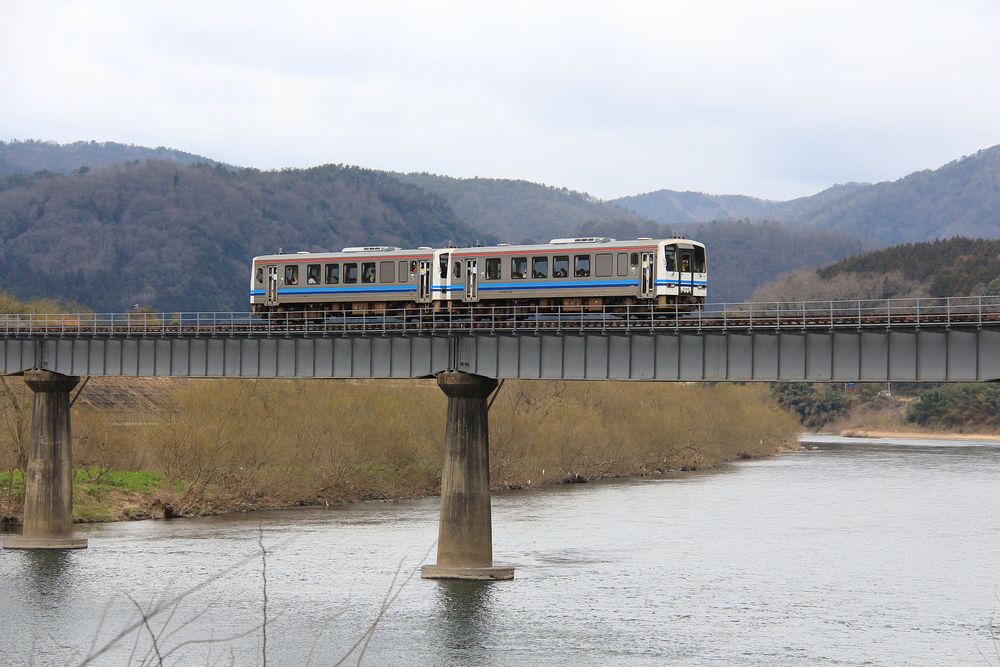
6943 The two diesel cars KIHA 120-314 and KIHA 120-309 crossing the Gônokawa River at Ozekiyama near Miyoshi. (2017)
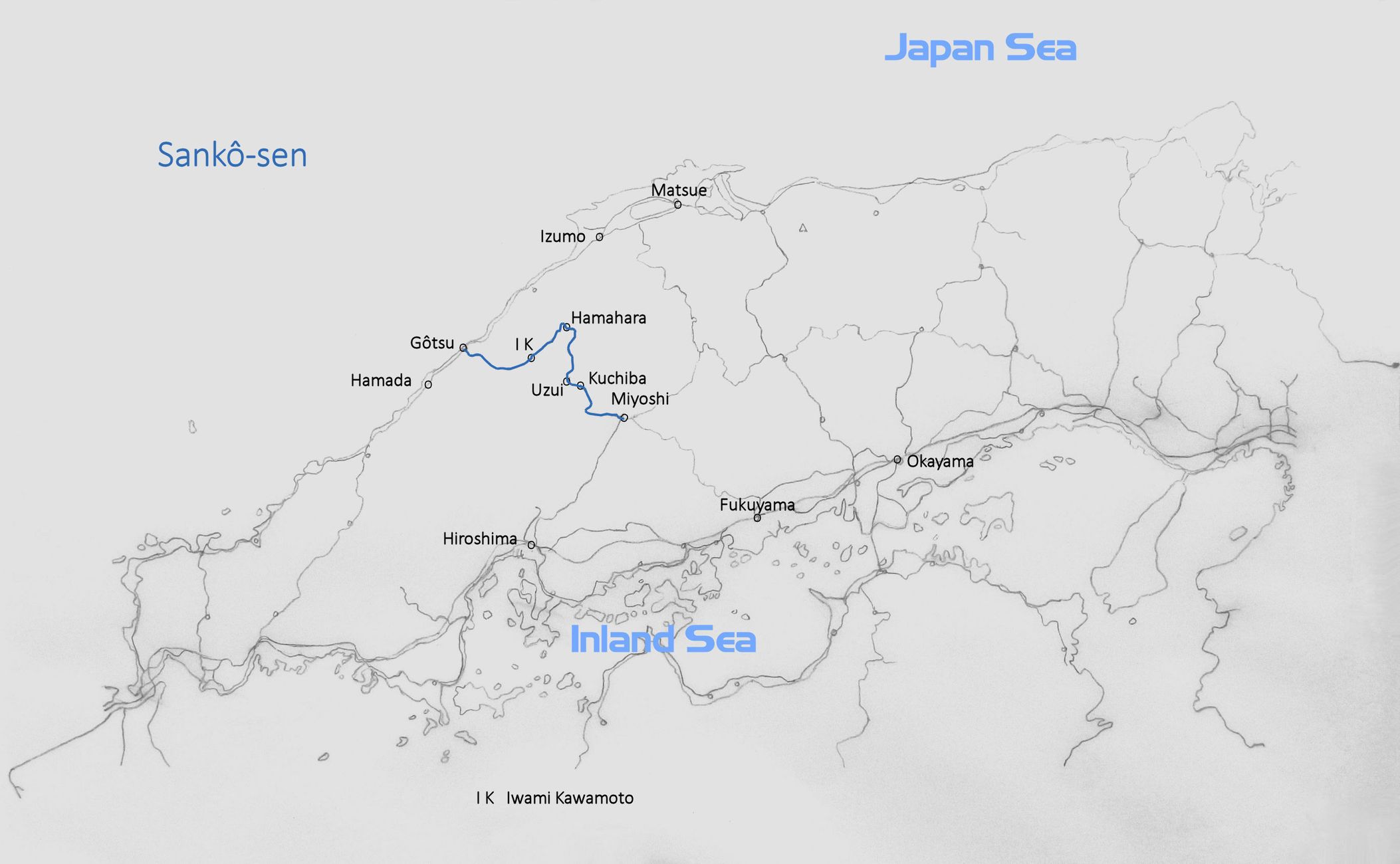
click on the small pictures to enlarge
On April 1, 2018, the Sankô-sen closed completely. The line could be seen as part of a connection between the Japan Sea (the San'in region) and the Inland Sea (the San'yô region), but in fact it did not link the centres of the San'in (Matsue, Izumo or Hamada) with the centres of the San'yô (Okayama, Fukuyama, Hiroshima) in an attractive way.
The Sankô-sen provided a regional service from the plateau of Miyoshi in the mountains of Hiroshima prefecture (157 metres above sea level) all along the river Gô-no-kawa down to the Japan Sea coast and the Gô-no-kawa estuary at Gôtsu (9 m.a.s.l.). On its way, it crossed the border between the Hiroshima and Shimane prefectures. The total length of the line was 108, 1 km, which is considerably longer than the direct distance of around 60 km between Miyoshi and Gôtsu.
Before closure there were only few services on the Sankô-sen, and these stopped at all stations, which made the full journey very slow. The line was not electrified. There was one through train in both directions in the morning, starting before 6 o'clock, and one more through service in the mid-afternoon. Three more services linked Gôtsu with Hamahara, 50, 1 km up the line; one of these ran to and from Hamada on the Japan Sea coast, where the diesel cars were serviced. There were two additional services both ways between Hamahara and Miyoshi in the very early morning and in the evening, and one train ran between Kuchiba (79, 7 km up the line) and Miyoshi and return in the afternoon.
Construction of the northern part of the Sankô-sen up the valley commenced in 1930 and reached Hamahara from Gôtsu in 1937. The southern part from Miyoshi down the valley as far as Kuchiba opened between 1955 and 1963. These two sections can be termed the "old line", which sees a maximum speed of 65 km/h. Work on the link between Kuchiba and Hamahara (the "new line", with a maximum speed of 85 km/h) began in 1966 and was completed in 1975. Through running between Miyoshi and Gôtsu became possible as from 1978. In 1982 freight services ceased. In spite of the maximum speeds possible (65 and 85 km/h), there were many sections which could only be traversed at speeds of between 15 and 30 km/h, depending on the weather conditions.
Torrential rain, landslides, flooding and fallen trees affected operation of the line from the outset. In recent years the line has been interrupted
- from July 11, 1972 to December 29, 1974 (Akatsuka to Hamahara closed)
- from July 23, to September 12, 1983
- from July 19, 2006 to June 16, 2007 (at first complete closure; December 15, 2006 Hamahara – Miyoshi reopened),
- from August 1 to 12, 2013 (Iwami Kawamoto – Hamahara),
- from August 24, 2013 to July 19, 2014 (at first complete closure; September 1, 2013, Hamahara-Miyoshi reopened).
Due to heavy snowfall and fallen trees the line was closed as from January 19, 2018, between Iwami Kawamoto and Miyoshi, but reopened up the valley as far as Hamahara on February 2.
The population along the line is dwindling continuously, and with increased motorisation we see a fall of passengers carried from an average of 458 persons per day in 1987 to 44 per day in 2013. Since then there has been a slight rise due to visitors to the line in view of closure.
In 2015, local organisations began to do their best to market the line, and indeed there have been all kinds of innovative plans to attract and welcome visitors. However, JR West saw no future for the railway, and the re-occurring natural disasters leading to partial or complete closure of the line for long periods led to the decision to abandon the Sankô-sen. There are various plans to re-use some of the infrastructure as monuments or to create a railway park "Gô-no-kawa Tetsudô" ("Gô-no-kawa Railway") in and around Kuchiba / Uzui.
At present (2022) short runs can be made in little tourist railway trucks from Kuchiba station upwards, and visits to the elevated Uzui station are also possible.
The name of the line derives from its two endpoints, Miyoshi (written 三次 ) and Gôtsu (written 江津 ). The two characters 三 and 江 together are read "Sankô").
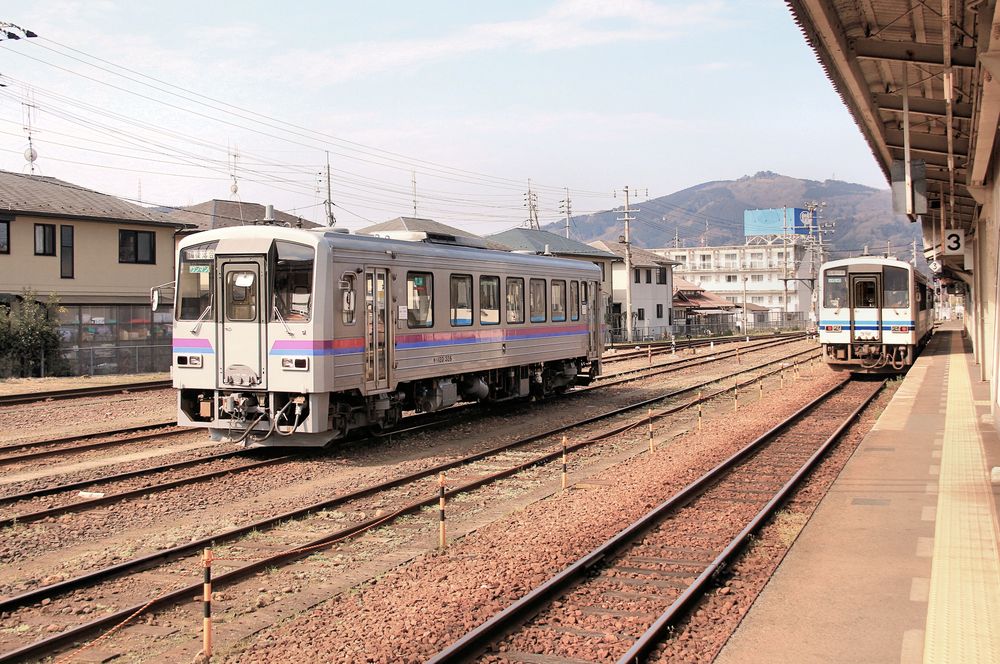
5039 Miyoshi station in Hiroshima Prefecture. On the left is kiha 120 326 on a Geibi-sen service to Bingo Ochiai, on the right are kiha 120 357 + kiha 120 316 waiting to depart on a Sankô-sen service down to Gôtsu. (2017)
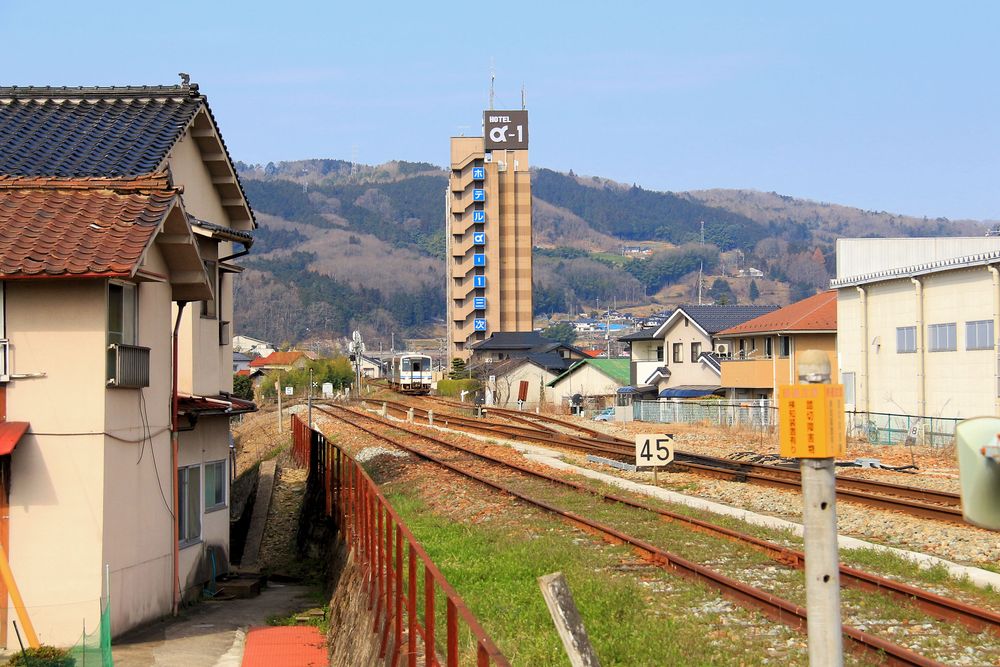
5007 A Sankô-sen train entering Miyoshi from Gôtsu. Two-car train consisting of KIHA 120-316 and KIHA 120-357. (2017)
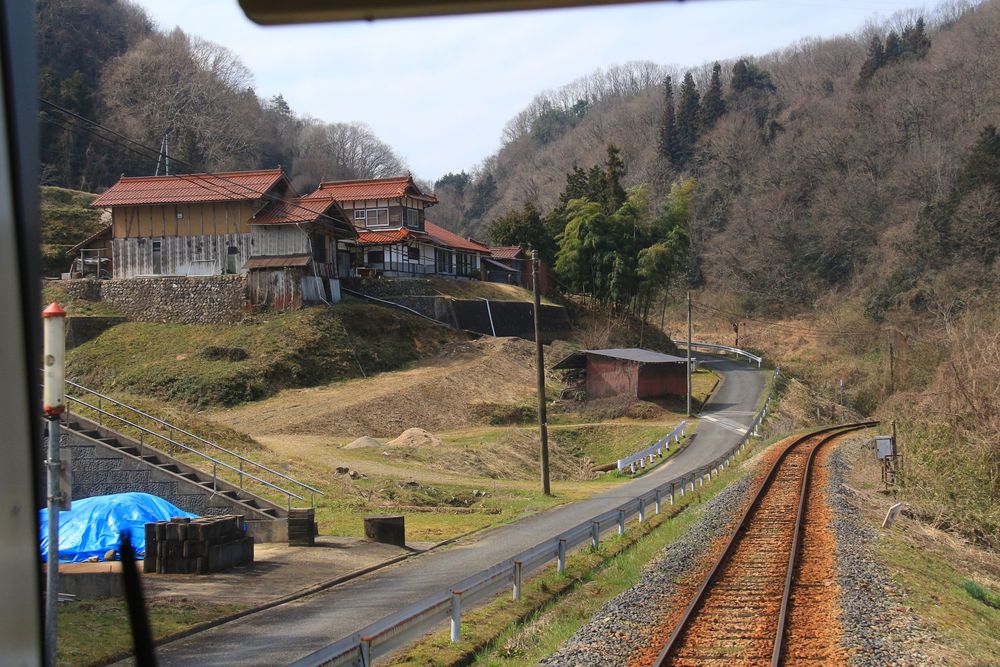
5092 Continuing down towards Nagatani. (2017)
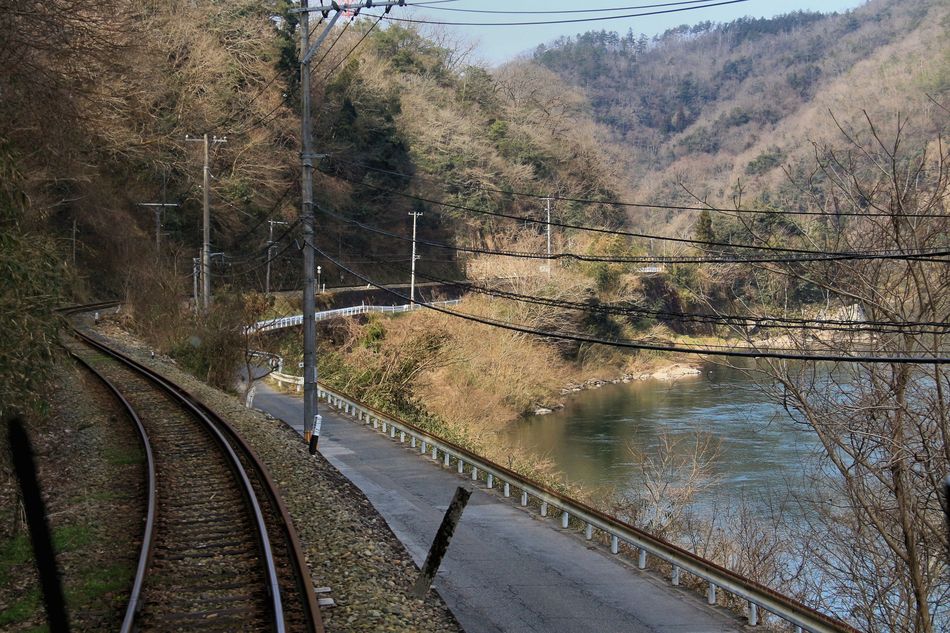
5095 Above Nagatani. (2017)
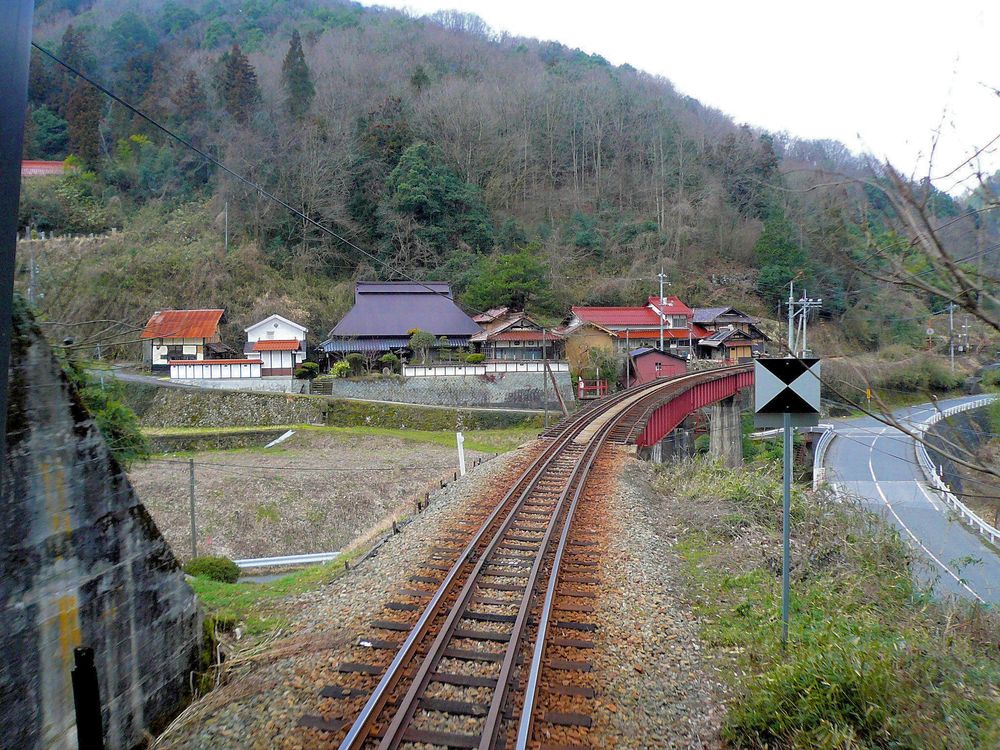
0232 At Nagatani. (2009)
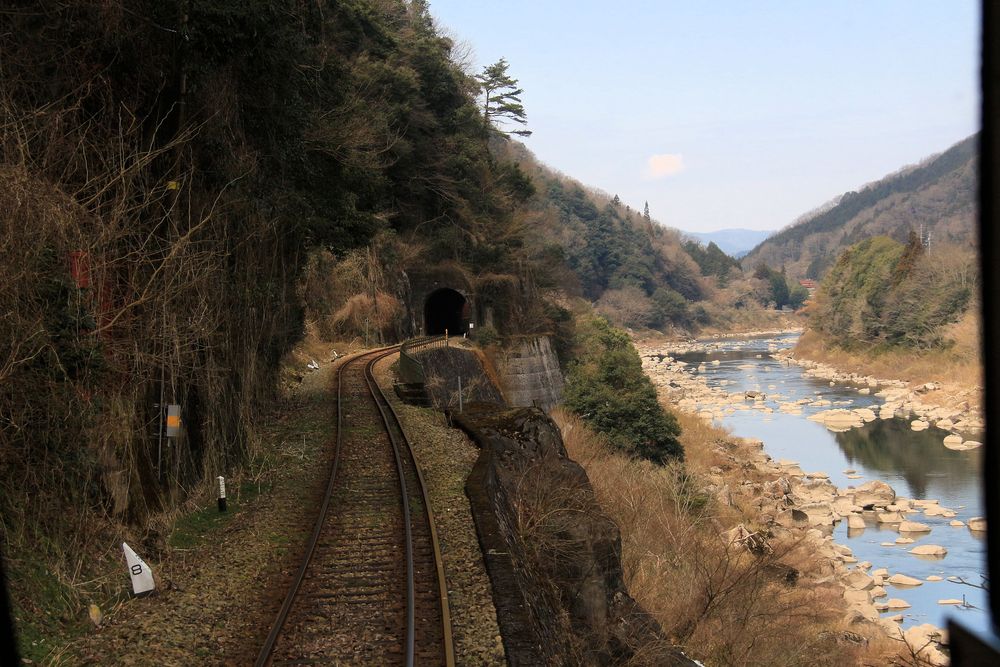
5114 On the way down to Funasa. (2017)
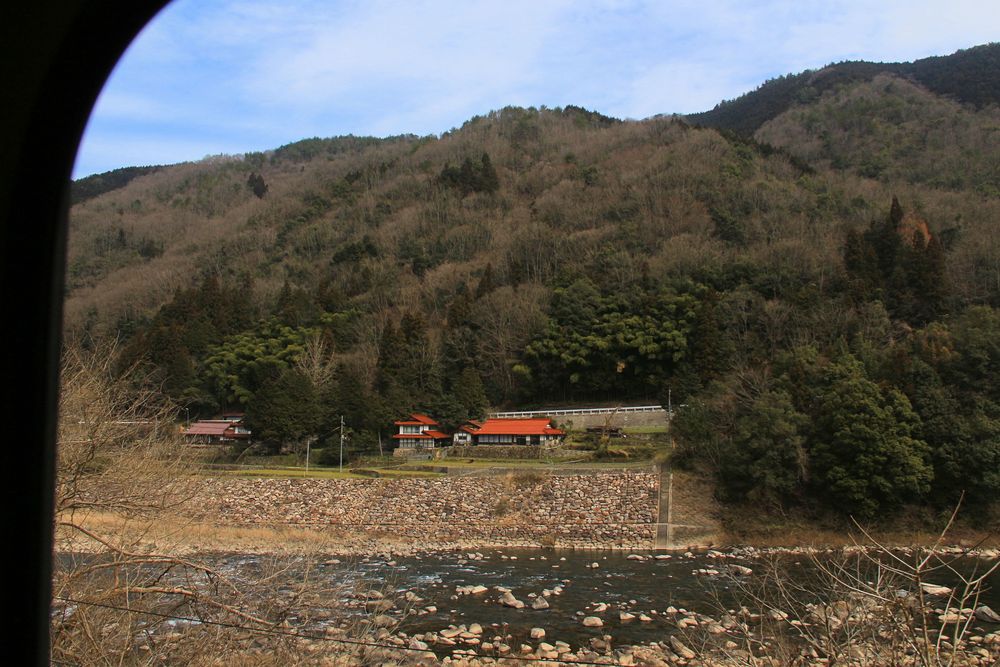
5121 Many of the settlements are on the other side of the river. (2017)
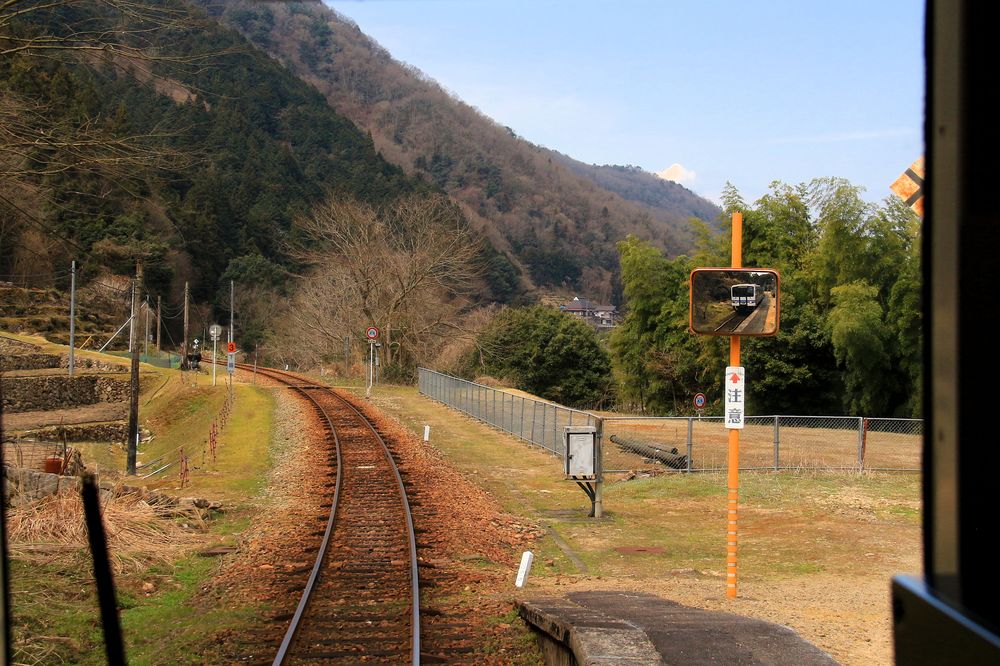
5131 The two diesel cars kiha 120 357 + kiha 120 316 at Funasa. (2017)
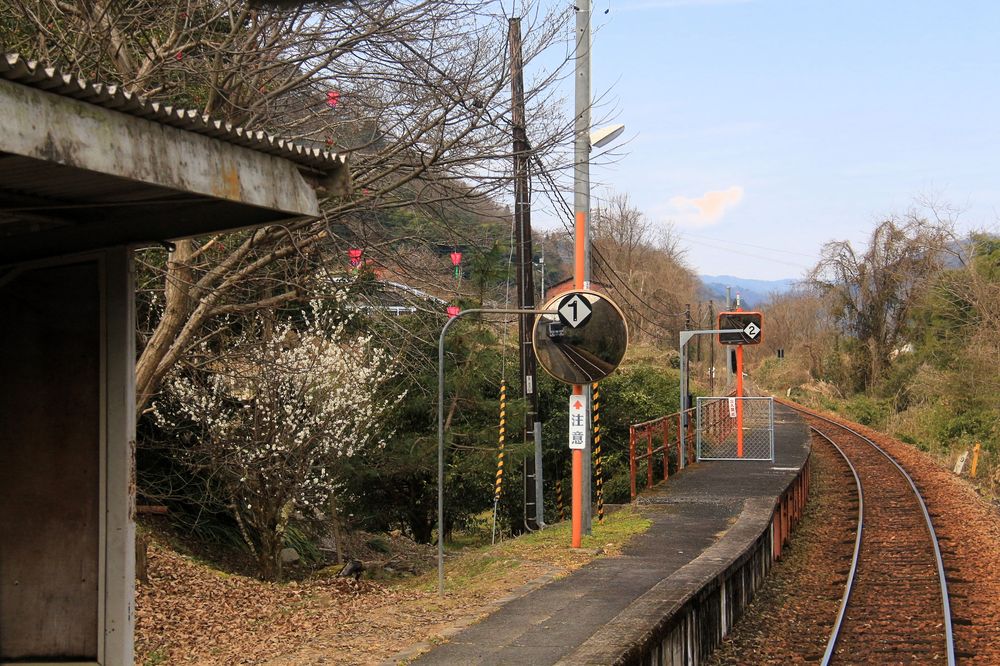
5148 Tokorogi halt, with kiha 120 357 in the mirror. (2017)
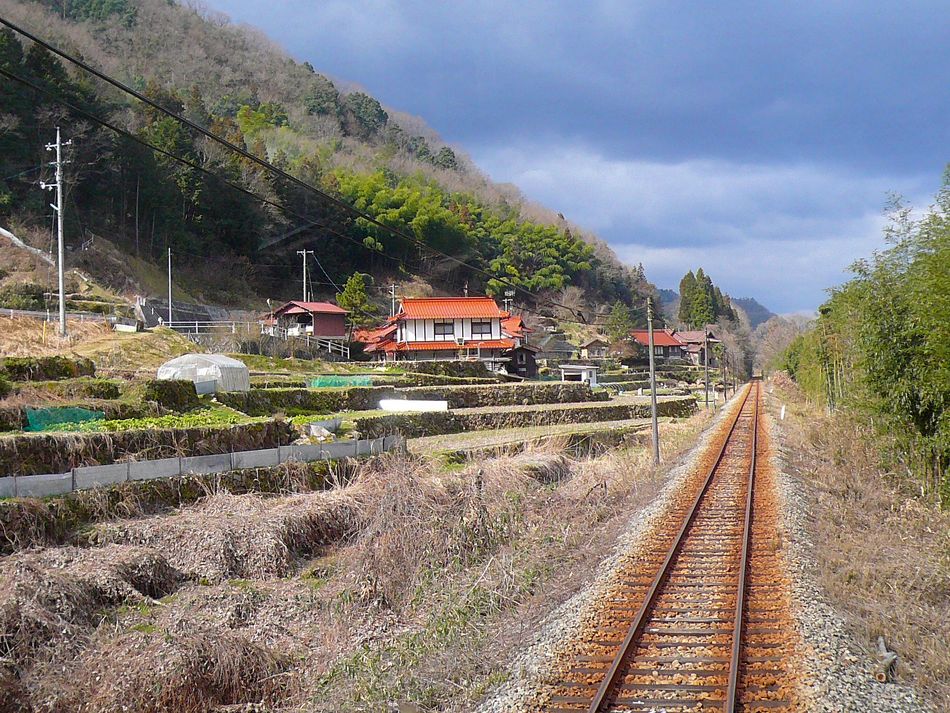
0251 Between Tokorogi and Nobuki. (2009)

5158 On the upper section of the line: Tokorogi. Abandoned farmhouse. Note the graves behind the house. (2017)
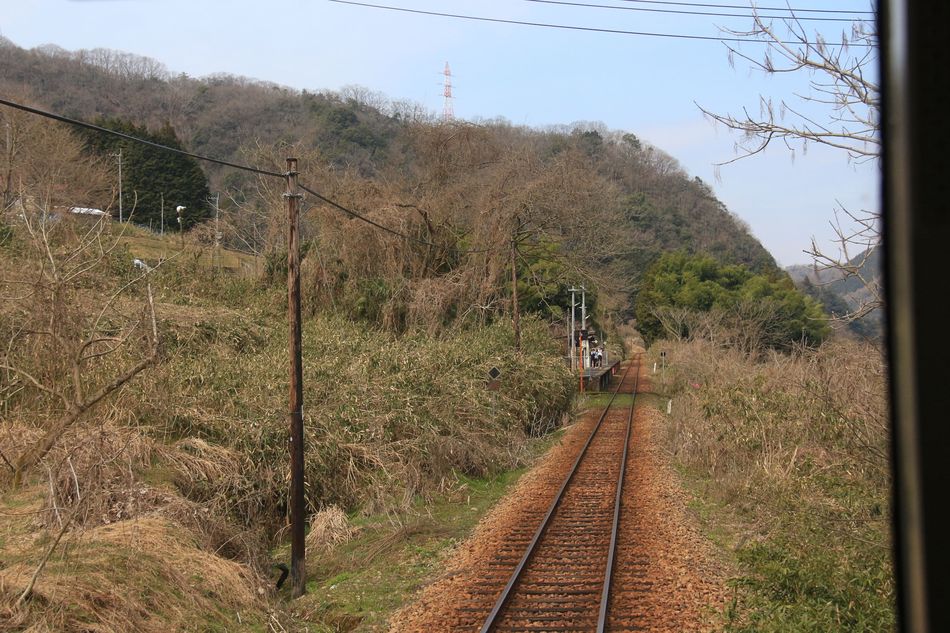
5161 Nobuki halt. (2017)
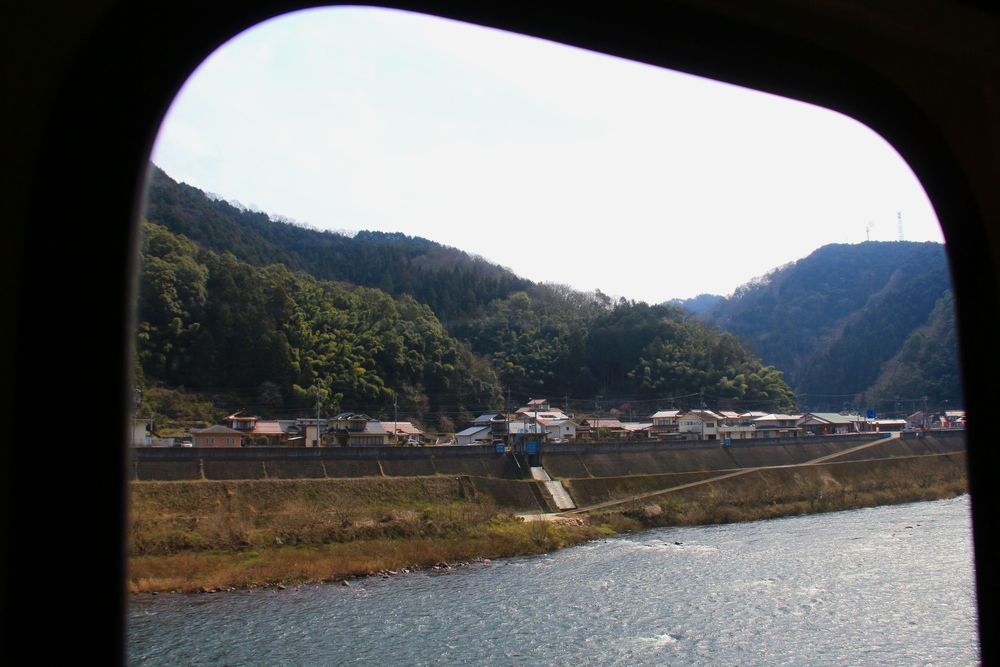
5252 After Sakugiguchi, looking across the river. Many of the settlements in the valley are on the right hand side of the river, whereas the railway line runs mostly on the left . (2017)
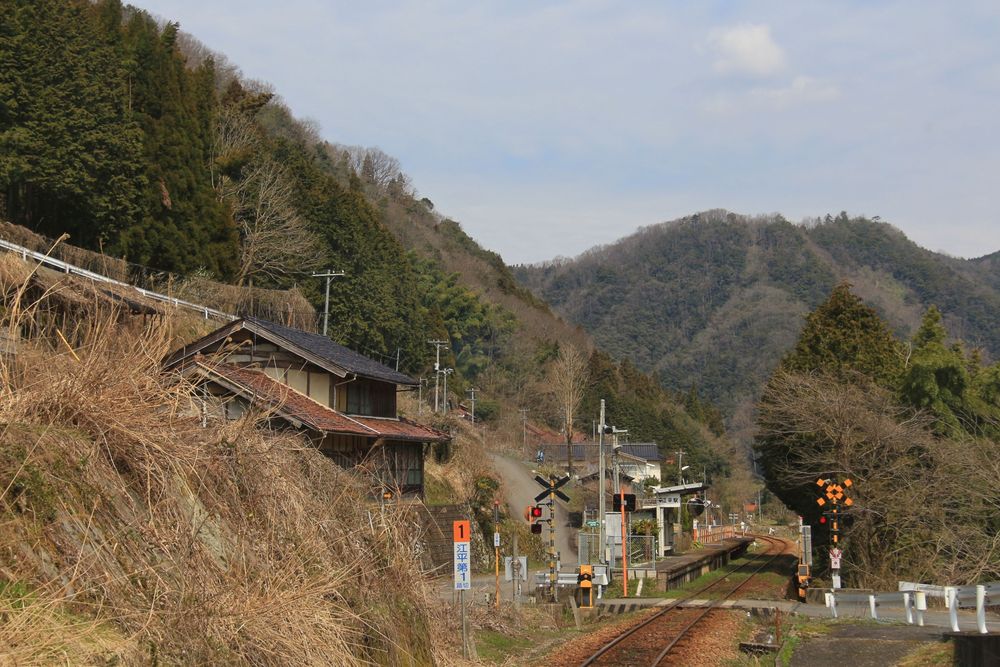
5258 Gôbira. (2017)
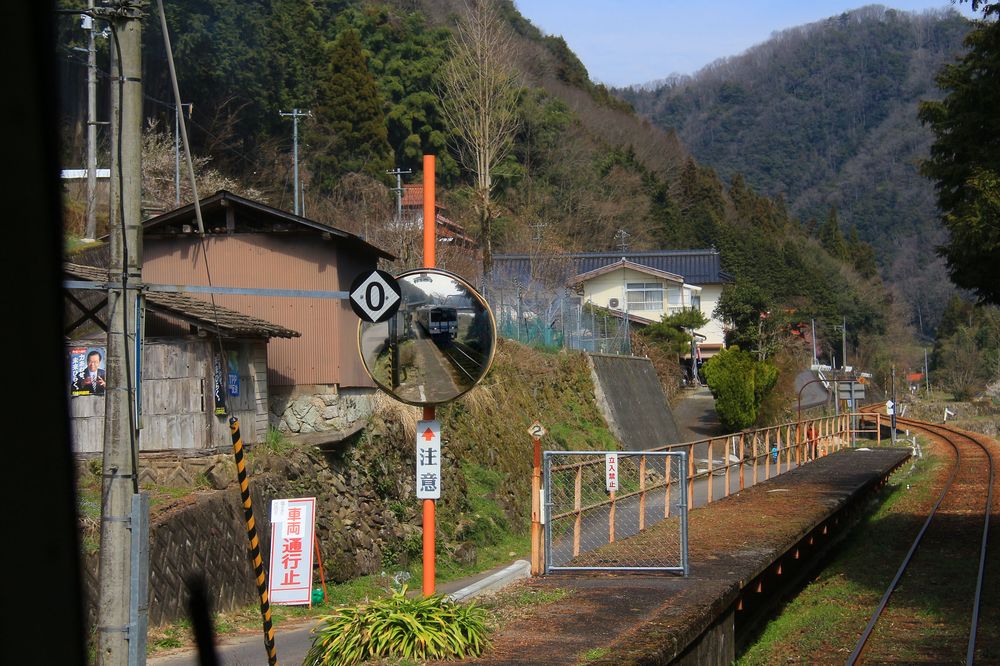
5261 At Gôbira. In the mirror KIHA 120-357 and KIHA 120-316. (2017)
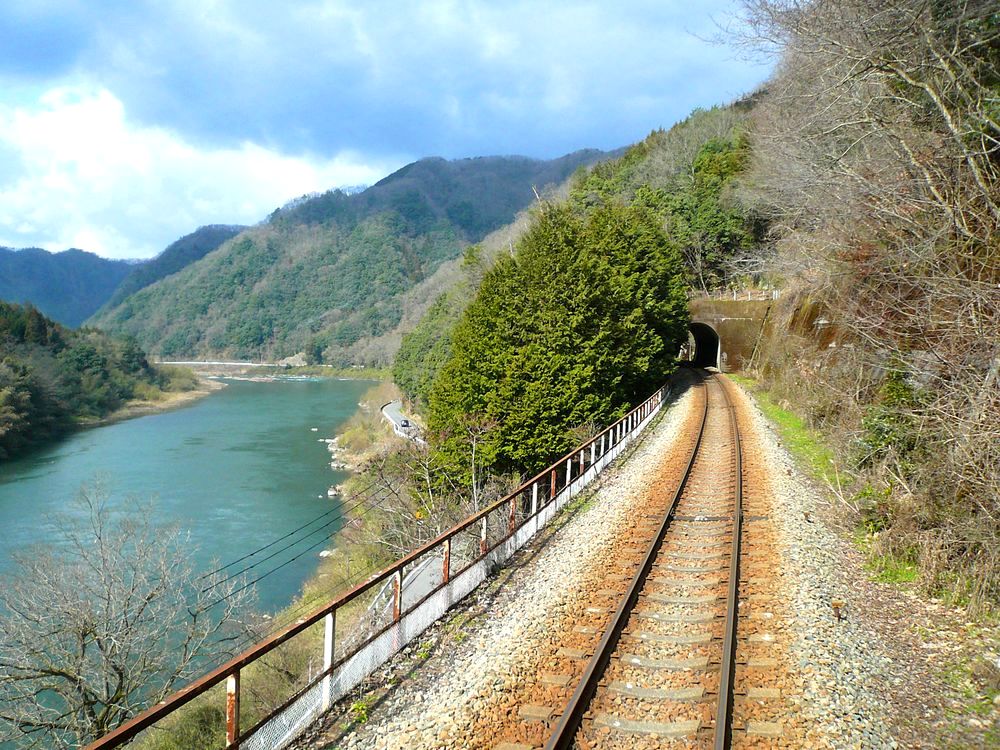
0296 On the "new" middle section of the line, completed in 1975: Near Ikawashi. (2009)
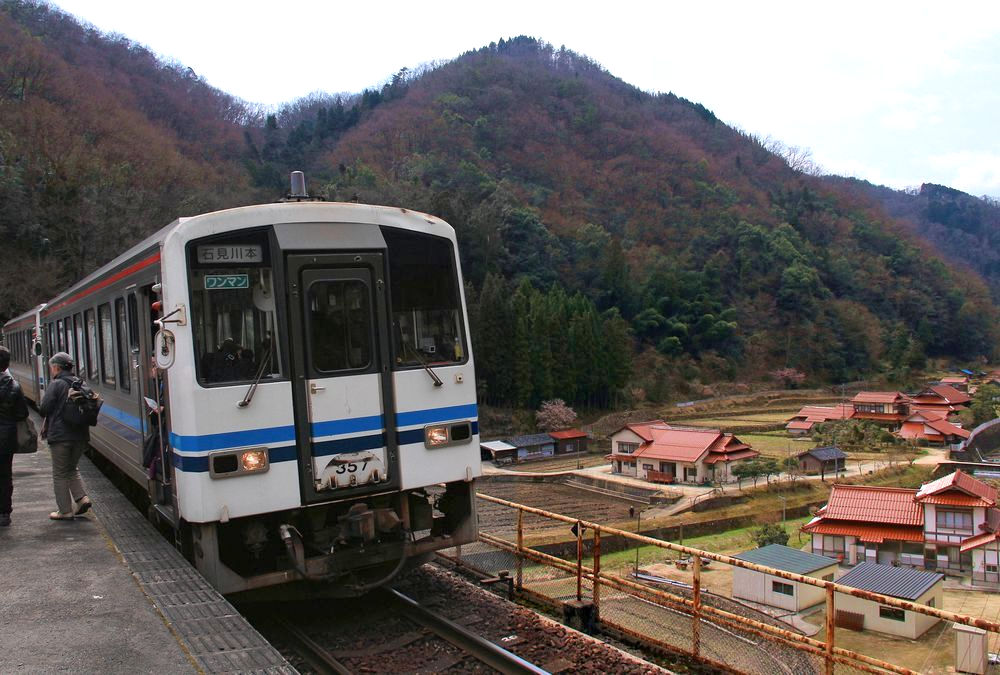
5323 On the "new" middle section of the line, completed in 1975: Uzui halt. KIHA 120-357 and KIHA 120-316. (2017)
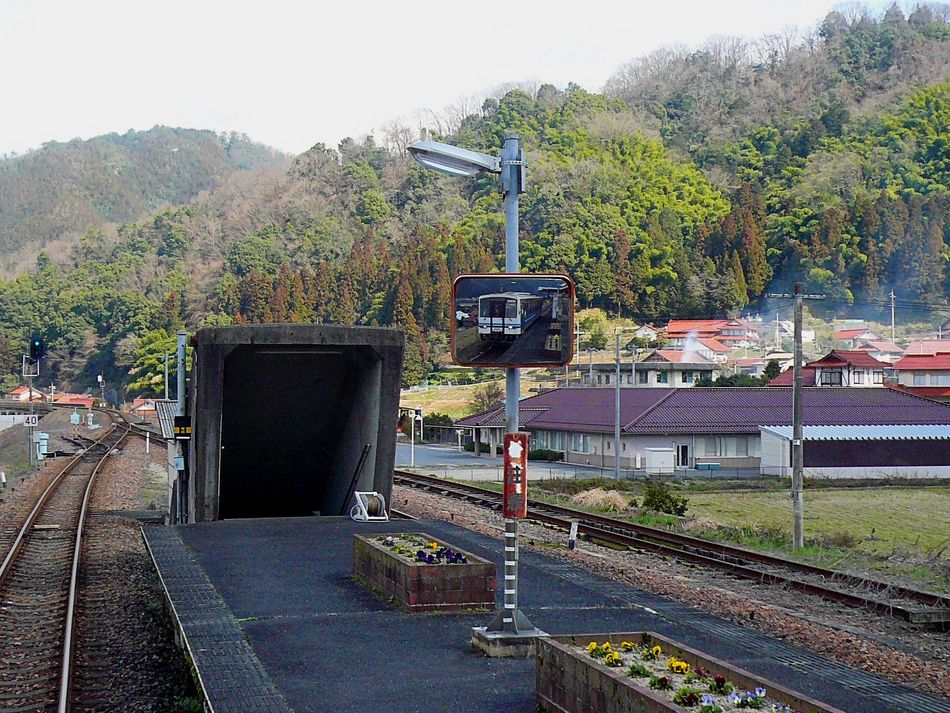
0313 Iwami Tsuga, with kiha 120 309 in the mirror. "Iwami" before the place name indicates that we are now in Shimane Prefecture. (2009)

5362 Iwami Matsubara. (2017)
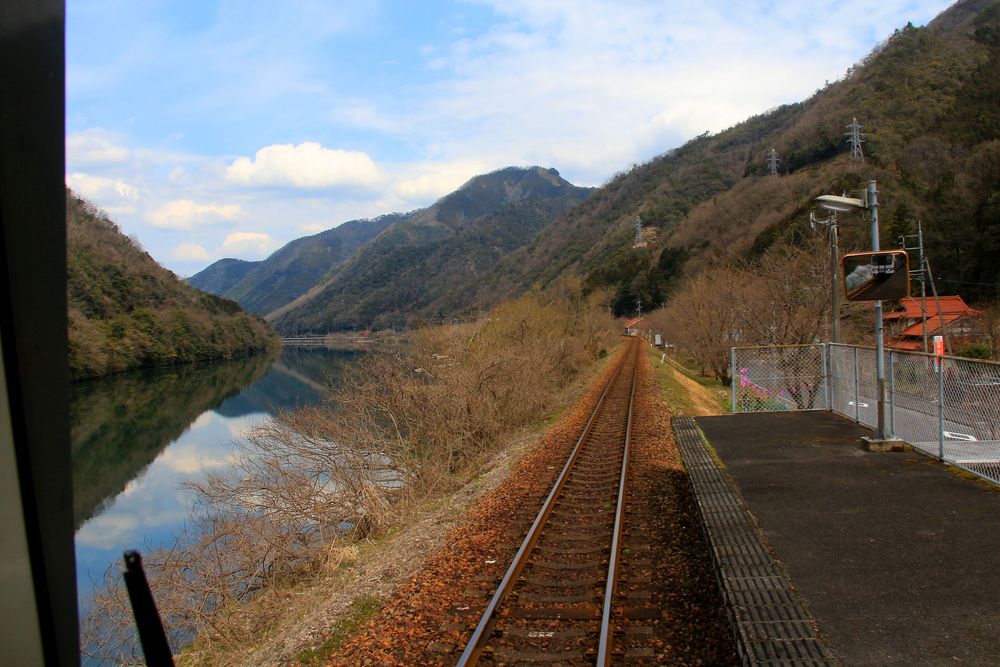
5388 On the "new" middle section of the line, completed in 1975: Ushio halt. In the mirror KIHA 120-357. (2017)
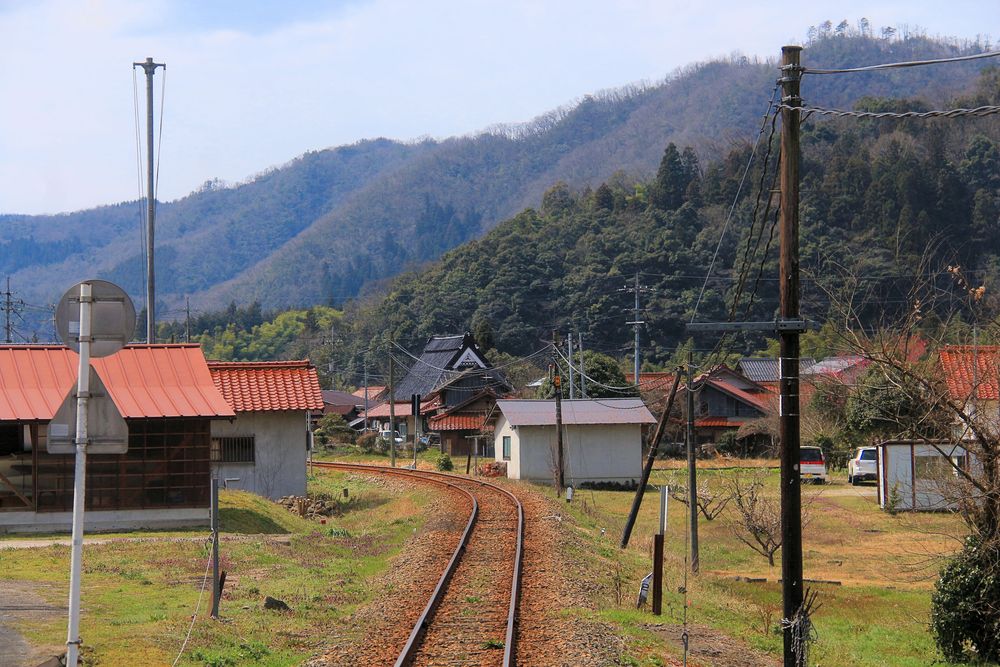
5478 Soon after leaving Iwami Yanaze towards Onbara. (2017)
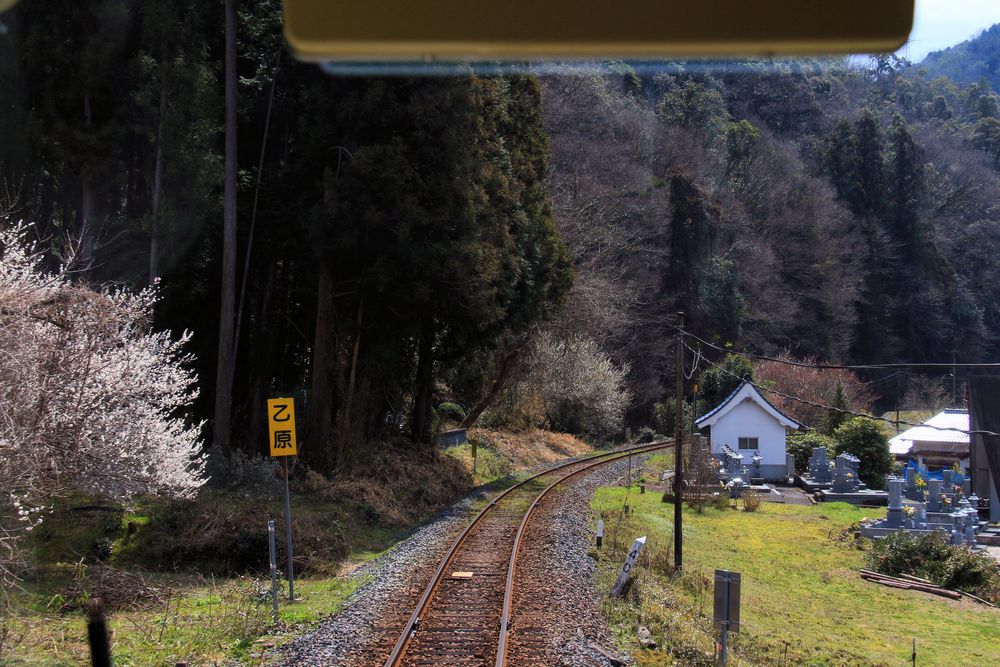
5491 From the train at Onbara, about 7 km upstream from Iwami Kawamoto. (2017)
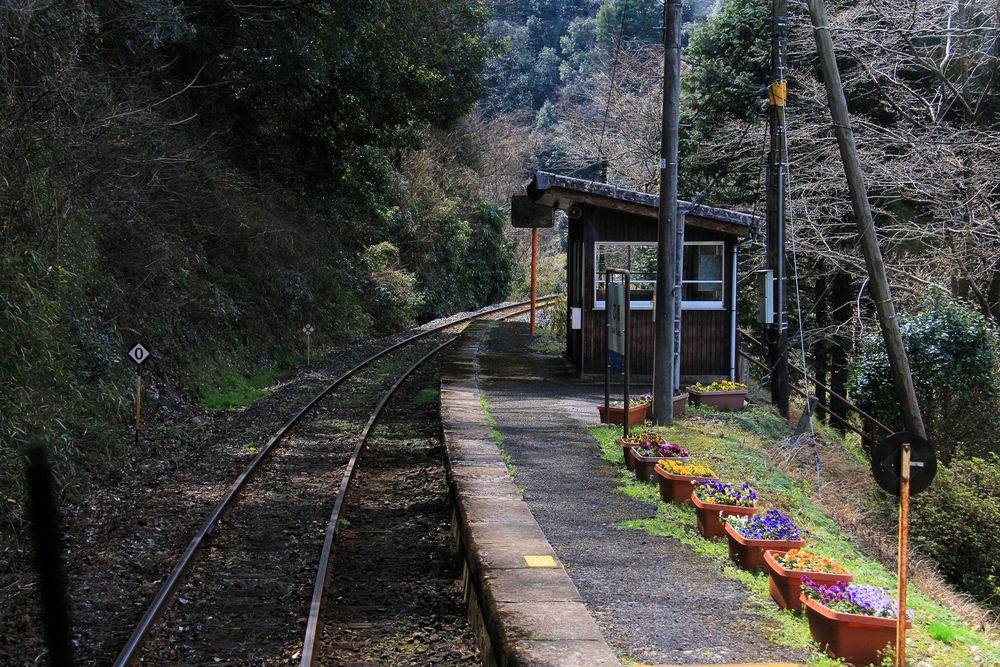
5492 Onbara halt. (2017)
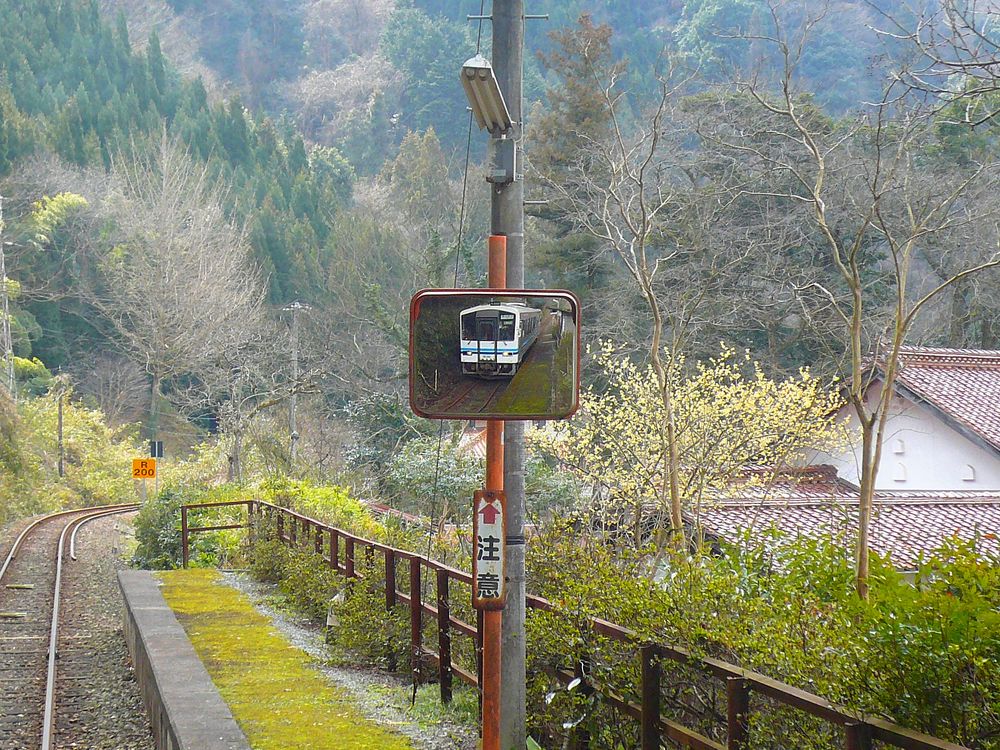
0356 On the lower section of the line: At Kirohara halt. In the mirror KIHA 120-309. (2009)
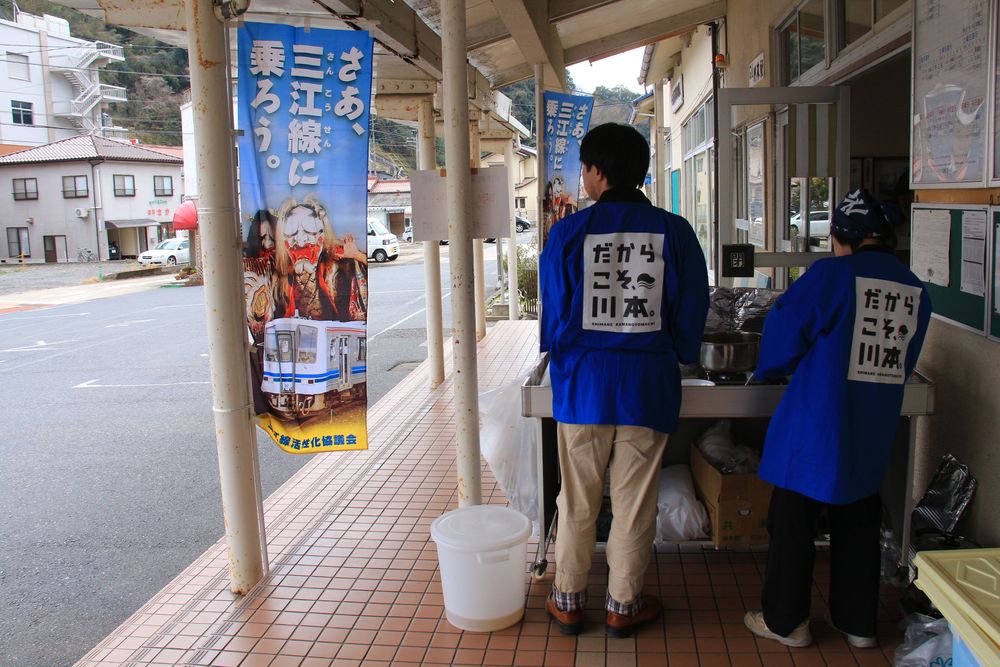
5564 The activities for "revitalisation of the Sankô-sen" include the sale of hot noodles at Iwami Kawamoto and propagating the links to ancient mythological figures and performances. (2017)

5595 On the lower section of the line: At Iwami Kawamoto. KIHA 120-307 entering from Gôtsu. (2017)

5605 Soon after leaving Iwami Kawamoto towards Inbara. (2017)

5609 Between Iwami Kawamoto and Inbara. (2017)

5625 On the lower section of the line: At Inbara. High dams now protect the settlements from severe flooding. Passing through such a protective dam the train crosses the river on a fragile bridge, in rainy weather at a speed of 15 km/h. (2017)

6875 On the upper section of the line: At Awaya. In the mirror KIHA 120-309. (2017)

6667 On the upper section of the line: Up the valley from Kuchiba. (2017)

6617 On the "new" middle section of the line, completed in 1975: Looking down from Uzui halt. (2017)

6586 On the "new" middle section of the line, completed in 1975: Climbing up the valley near Iwami Tsuga. (2017)
6498 On the lower section of the line: Hamahara station with KIHA 120-317. (2017) .

6357 On the lower section of the line: Iwami Kawamoto station with a train composed of KIHA 120-357 and KIHA 120-316. To the left is a snowplough. (2017)

6315 On the lower section of the line: Climbing up the valley above Shikaga. (2017)

6256 On the lower section of the line: A maximum speed of 30 km/h. Between Kawado and Tazu. (2017)
6250 On the lower section of the line: Kawado station. KIHA 120-309 in the mirror. (2017)





























































































































